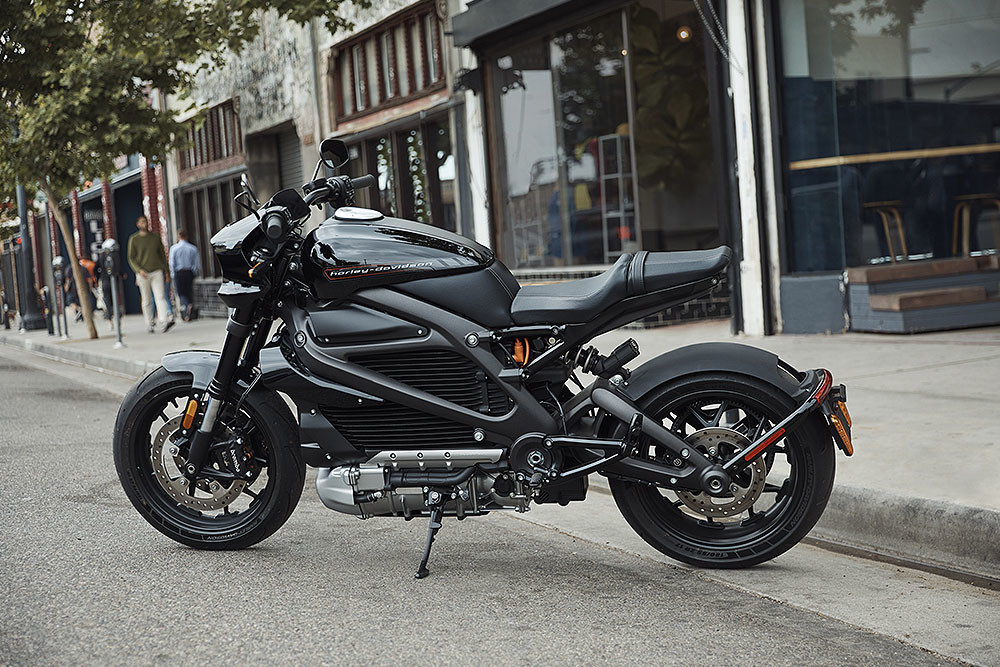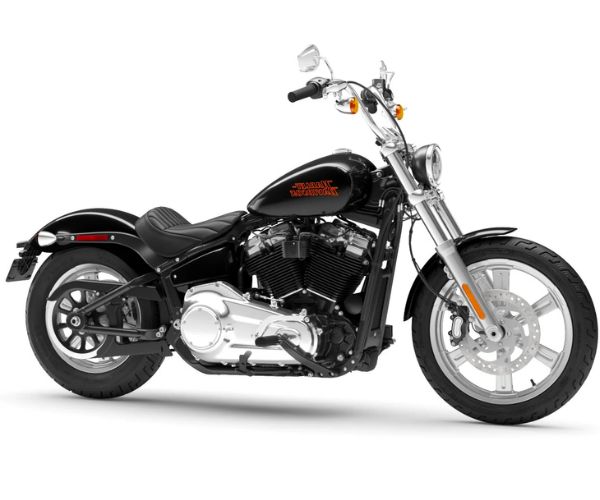You’ve probably started to see more and more electric motorcycles on the road along with the stations and facilities for charging them.
However, just because they’re becoming increasingly popular, does that mean they’re better than gas motorcycles?
The truth is with the current technology, both types of motorcycles have their advantages and disadvantages, and it’s good to know them to determine which might be better for your personal situation.
Electric vs Gas Motorcycle Comparison Chart
The Pros and Cons of Electric Motorcycles
Electric motorcycles are a relatively new technology that use an electric motor powered by a rechargeable lithium battery. They have numerous advantages that have resulted in their growing popularity, with over 55 million units sold worldwide in 2022.
Advantages of Electric Motorcycles

Cheaper Fuel
Currently, the average price per gallon of gasoline in the US is about $3.50 while the average price per kilowatt-hour of electricity is $0.17.
Both gas and electric motorcycles vary in their efficiency, but even if we take a highly fuel-efficient gas motorcycle getting 100 mpg and compare it to an electric motorcycle getting around 10 miles per kWh, fueling the gas motorcycle costs $0.04 per mile but just $0.02 for the electric motorcycle—half the cost.
Less Maintenance
Electric motorcycles have fewer moving parts and don’t require as much maintenance.
Compare this to gas motorcycles, which need regular oil changes and cleaning of the gas tank, as well as the maintenance of pumps and cables.
Quieter
Electric motors make much less noise than internal combustion engines, especially at low speeds.
Now, a lot of people like the growl of their motorcycle engines, but there’s no denying that streets full of cars and bikes with gas motors can be loud.
Electric motors cut down on this noise pollution. Your neighbors, at least, will appreciate the lack of a loud engine.
Better Torque
Unlike internal combustion engines, which have to reach high RPMs to achieve maximum torque and acceleration, electric motors achieve maximum torque immediately. This means they accelerate faster than gas motors.
No Transmission
Since electric motors produce maximum torque immediately, there is no need to shift up through gears to accelerate. Rather, you merely control the power output with the throttle.
Now, I like a manual transmission and “being one with the machine” as much as the next guy, but the fact is, the lack of a transmission on an electric bike isn’t just more convenient, it’s safer. It’s one less thing to focus on while you’re riding.
Less Heat
I’m sure I’m not the only one who’s burned himself on his bike’s exhaust pipe.
Combustion engines get hot. After all, they have gasoline exploding inside them constantly. Electric motors produce a little bit of heat, but it’s nothing compared to gas motorcycles. That means fewer burns and a cooler ride.
Environmentally Friendly
Electric motors have a considerably smaller carbon footprint than gas motors.
Of course, the exact carbon footprint ultimately depends on the source of electricity you use to charge the motorcycle, but consider that in the US, one kilowatt-hour of electricity produces around one pound of CO2, while one gallon of gasoline produces almost 20 pounds of CO2.
If we do the math, this means a motorcycle getting 40 mpg fuel efficiency produces a pound of CO2 every two miles. Meanwhile, an electric motorcycle traveling 10 miles on a kWh is only producing a pound of CO2 every 10 miles.
It’s not just CO2, though. Gas motors produce a lot of contaminants that are bad for your lungs. Breathing these in regularly can cause a lot of problems, and electric motorcycles help cut down on the overall concentration of these pollutants in cities.
Disadvantages of Electric Motorcycles
Battery Limitations
Currently, the biggest problem with electric motorcycles is the limitations their lithium batteries pose. The technology is still evolving, and many electric motorcycles cannot hit the same top speeds as gas motorcycles, nor can they travel as far, especially at highway speeds.
Moreover, as you’ve surely noticed with your cellphone or laptop, rechargeable batteries begin to degrade in quality as soon as you start using them. While motorcycle batteries are a bit more robust, it’s still common to experience decreased range and power over time.
Charging Times
How long does it take to fill your bike up with gas? A few minutes at most. Now compare that to the five to eight hours required to charge most electric motorcycles.
Even if you get one of the most advanced bikes that charges in just an hour, that’s a long time to wait if you’re in a hurry.
High Costs
Electric motorcycles are much more expensive than gas motorcycles. Plus, they depreciate faster, so you can’t recoup as much of the cost if you sell it later.
More Tire Wear
Interestingly, electric motorcycles tend to experience more tire wear and require tire changes more frequently than gas motorcycles. This is because of the higher torque, even at low speeds. Still, this is unlikely to outweigh the overall higher maintenance costs of a gas bike.
The Pros and Cons of Gas Motorcycles

Gas motorcycles are those using an internal combustion engine. In other words, the motor creates small explosions with the gasoline to move pistons that turn gears and power the motorcycle.
Invented in 1885 by Gottlieb Daimler and Wilhelm Maybach, gas motorcycles still represent the bigger share of the motorcycle market due to a number of key advantages.
Advantages of Gas Motorcycles
Longer Distances
Generally speaking, you can ride a gas motorcycle a lot farther on a tank of gas than an electric motorcycle on a full battery.
The technology is improving, and some of the best electric bikes can now go several hundred miles, but this range tends to drop considerably when riding at highway speeds.
Gas motorcycles remain the better choice for interurban travel.
More Infrastructure
Electric charging stations are popping up all over the place, but it’s still easier to find a gas station. The infrastructure is much more developed and convenient for a gas motorcycle.
More Independence
If you have an electric motorcycle, you’ll most likely be dependent on the “grid” and electrical infrastructure for your transportation. A gas motorcycle gives you a bit more independence and allows you to travel more easily and confidently to less populated and developed places.
More Speed and Power
Even though electric motorcycles have better torque, gas motorcycles usually get better top speeds. They’re much better at maintaining high speeds over long distances, something that can drain an electric bike’s battery quickly.
Better Resale Value
It’s a lot easier to sell a used gas motorcycle, and they don’t depreciate as much in value. There’s a large market of people looking for inexpensive gas bikes, but not so much for used electric bikes.
Traditional Appeal
Most likely, you learned how to ride on a gas motorcycle. They’ve been around for nearly 150 years and have a long and storied heritage.
A lot of people prefer the style—not to mention the noise—of a traditional gas bike to that of a modern electric motorcycle.
Disadvantages of Gas Motorcycles
Volatile Gas Prices
In the last 10 years, the price of gas has been a roller coaster, from over $3.50/gallon in 2013 to a low of almost $2/gallon in 2016 back up to nearly $3.50/gallon now in 2023.
This volatility makes it difficult to budget for your transportation needs if you’re using a gas motorcycle. While electricity costs certainly vary as well, it’s a bit more predictable.
Dirty
Gas motorcycles are greasy, grimy, and smoky. They leave stains and dirt everywhere and contaminate the air when they’re running. Electric motorcycles are much cleaner.
Increasing Regulation
It’s no secret that governments aren’t fans of gas motors. They constantly face increasing restrictions regarding emissions, with some places even banning them in certain areas.
Though it’s impossible to predict exactly what and when it’s likely that this trend will continue into the future.